Fata Morgana and the sky that folds
Spall 003: Mirages, UAP, and the architecture of illusion
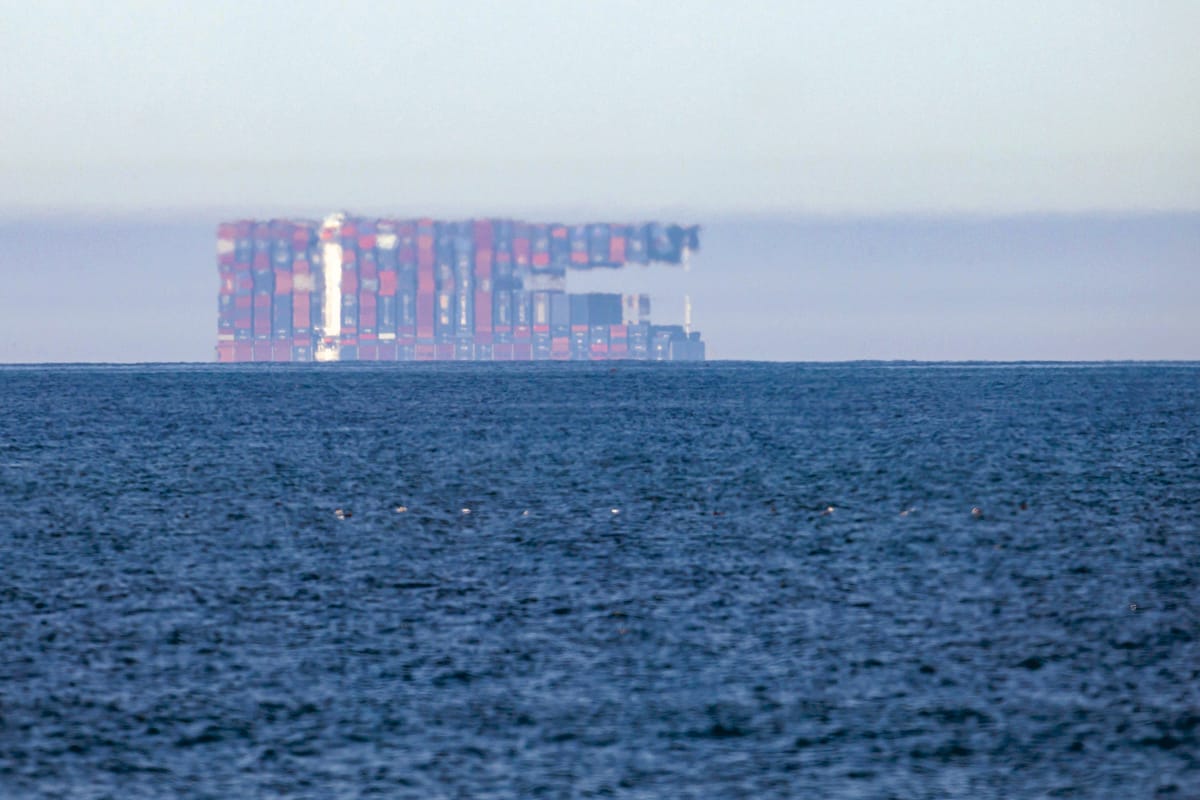
It happens in spring.
The lake contracts, reshapes itself. Shoreline sixty kilometres distant, hidden below any natural eyeline, rises up to flank the horizon. Looking south from Toronto, the distortion poses first as clarity—as if the day were simply sharp enough to reveal the edge of upstate New York. From the other side, the city towers over the horizon, suddenly closer than should be possible.
Sometimes it holds for an hour or two, projecting a stable duplicate of the shore and skyline, but occasionally the texture frays. Landmarks repeat and waver. Geometries skew. A solid coast seems to melt upward into the sky. You're not seeing across the lake. You're seeing the other side bent into view, an impossible folding of distance and perspective, conjured by nothing more than a gradient of air and water.
In its simplest form, this is a superior mirage. But when the gradient sharpens into a duct, the image begins to multiply and ripple. Distance distorts. Lines double. A skyline fractures and repeats, as if the atmosphere were attempting to reassemble reality from memory. This is what's known as Fata Morgana, a spectacle so elaborate it fractures the ordinary seams of vision.
Named for the sorceress Morgan le Fay from Arthurian legend, who was said to conjure castles from mist to lure sailors to ruin, the phenomenon is not pure invention so much as a set of circumstances that renders the real strange.
What appears stable—the lake, the land, the boundaries between here and elsewhere—shudders, refracts, and reassembles itself. Only to vanish again as quietly as it came. Fata Morgana is not a hallucination. It's an optical fracture, produced by the collision of thermal layers, light bent along density gradients where hot and cold air shear apart. For a little while, the visible world folds and lifts on invisible scaffolds of pressure and heat.
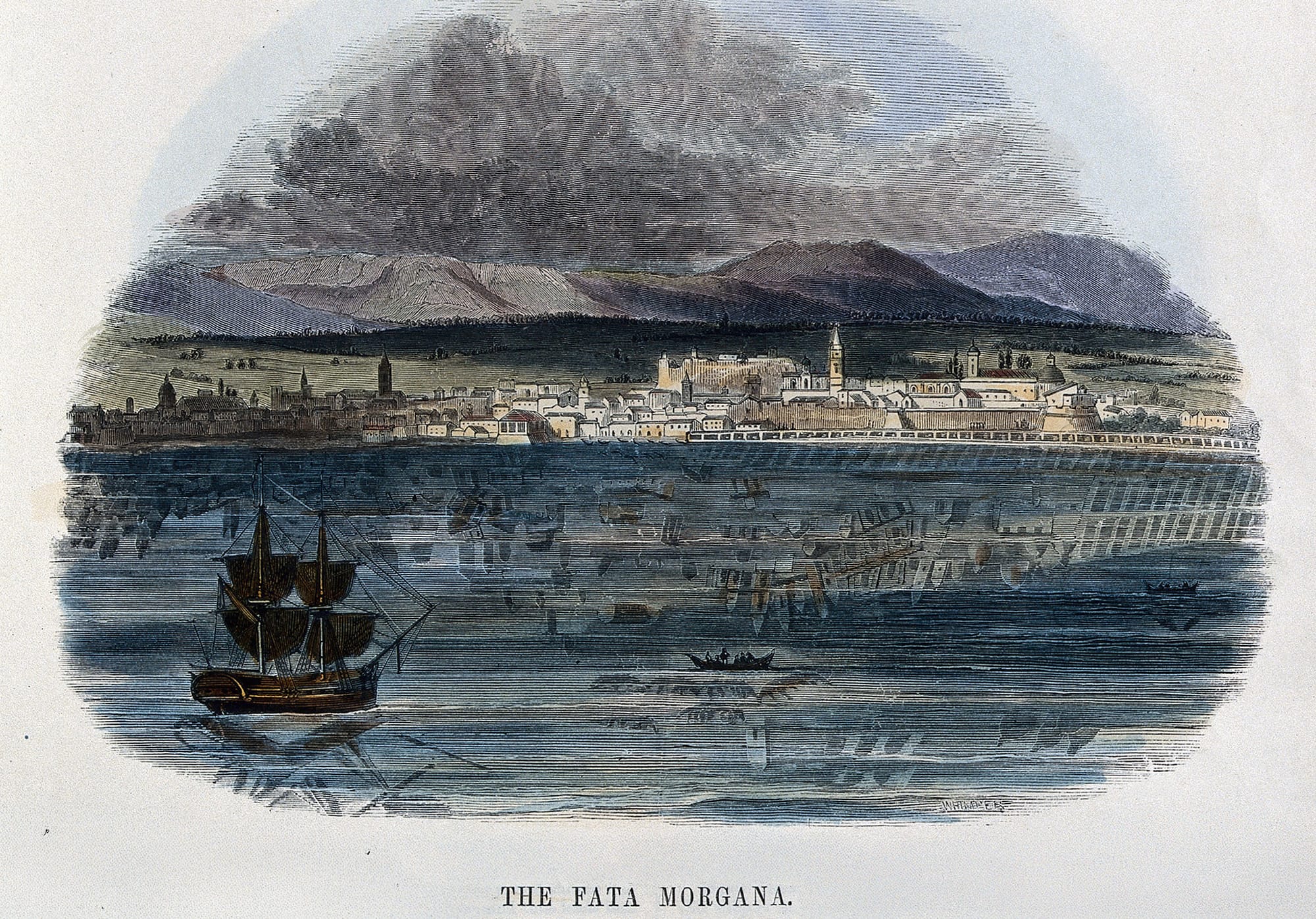
The mechanics of a superior mirage unveil a structural misalignment between what is and where it seems to be. In that sense, it doesn't erase reality so much as reveal our tenuous grasp of it. In the centuries before science fixed the world into grids and latitudes, the sea remained an mysterious surface, one that challenged our perception as frequently as it bent the horizon. To those who moved across it, the line between earth and sky could never be fully trusted.
The Strait of Messina, where le Fay was said to weave illusions across the water, became the locus of these disturbances. Ghost cities shimmered into existence above the waves, unreachable, evaporating at the approach. What the eye seized, the mind explained with sorcery: a glimpse into a world just beyond reach, conjured and then withdrawn.
The closer one sailed, the farther the promised shore retreated. Illusion was not just spectacle. It was danger.
Out of these waters also rose the spectral figures of nautical dread—the Flying Dutchman, doomed to sail forever just beyond safe harbour, a glowing ship glimpsed and then gone, its presence an omen of death. Accounts varied: some saw it in full sail, others described only a mast, lit with unnatural light, suspended above the waves. To mistake such an apparition for a nearby ship or even landfall could cause confusion leading to disaster.
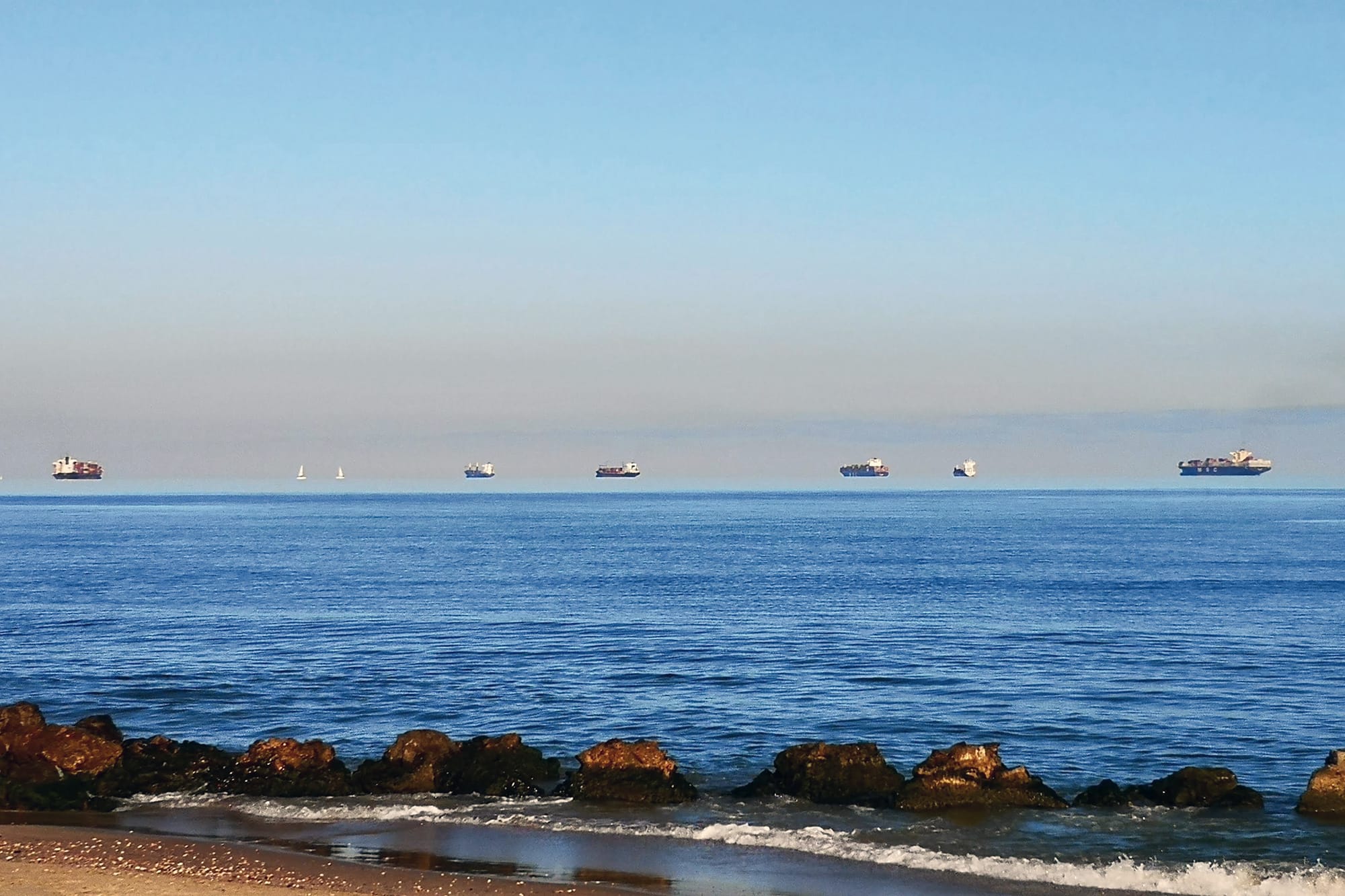
Not every floating ship is a mirage, though. Often, it’s the result of a false horizon—an effect born from sea fog, humidity, or the sharp divide between calm and choppy water. The eye searches for continuity and fills in the missing base of the vessel with an assumed ocean surface. But even this simpler illusion reveals something deeper: we don’t just see the world, we narrate it in real time. What appears solid may be stitched together from fragments—light, air, and expectation conspiring to render the improbable into something we accept without pause.
Even on land, such illusions found purchase. For centuries, mapmakers struggled to fix the edges of the world, only to find the world answering back in riddles. Charts from the 16th to 19th centuries are crowded with phantom islands—Frisland, Hy-Brasil, St. Brendan’s Isle—geographies that hovered in and out of record depending on the visibility, the weather, or the confidence of a captain.
Some were likely born of mirage. Others were duplications of real islands, displaced by miscalculation or poor instruments. But all of them shared one condition: they were seen. By the 1800s, this tendency to name the uncertain had shifted from open ocean to inland lakes. On Lake Superior, cartographers charted places like Isle Phelipeaux and Isle Pontchartrain, landmasses that appeared on maps for decades. Yet, when surveyors ventured to confirm their existence in the 1820s, they were nowhere to be found.
The geography was smaller now, but the illusions had only grown closer.
In 1894, along the shores of Lake Ontario, these ripples in perception opened once again. Newspapers in Rochester recorded the appearance of Toronto suddenly rendered in immaculate detail with buildings, church spires, streets lifted and suspended above the lake. "A City in the Sky," they called it.
Witnesses spoke of familiar structures transported nearly clear across the lake, their angles slightly softened by the hot August air hovering above the cool water. Even seasoned mariners found themselves uncertain given the clarity of the skyline before them. Boats traveling across the lake appeared to reach shore and then disappear, floating into the mirage and under the curvature of the earth.
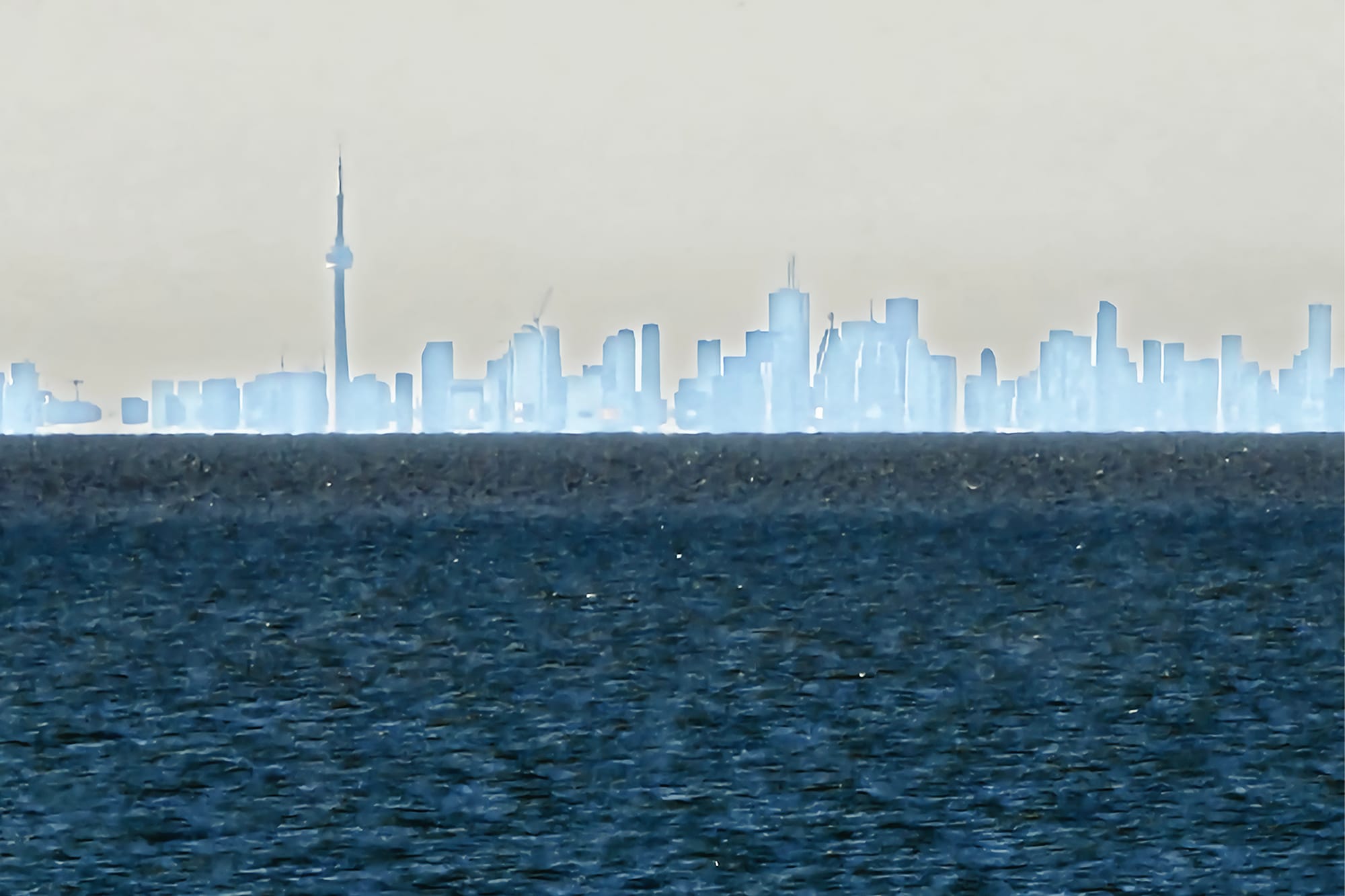
In Buffalo, the story grew larger still: a vision of Toronto, they said, cast above the horizon, its streets and steeples floating in improbable clarity. But its geography betrayed the myth. Facing southwest onto Lake Erie, it could not have caught Toronto’s image across the escarpment and unseen land. Still, the shimmer was real. A fragment rose, a lift of some nearer shore, bent and magnified, and into it, the mind inscribed a city.
Just decades later, another mirage may have played a fatal role in one of the most mythologized disasters of the 20th century. In the early hours of April 15, 1912, lookout Frederick Fleet strained into the distance from the crow’s nest of the RMS Titanic, scanning a horizon blurred by cold and moonless skies. What he saw—or didn’t—may have been shaped as much by the air as by the ocean.
We all know the standard account. When Fleet spotted an iceberg ahead, he rang the warning bell. The ship turned, but not enough. Minutes later, an iceberg scraped down the Titanic's starboard side, allowing water to spill into five of its sixteen watertight compartments, eventually spilling over the bulkheads and dooming the ship.
It would be two and a half hours before the ship broke apart, and longer before morning light brought delayed rescue and the full weight of history to the scene. But in the version told by historian Tim Maltin, something else was in place that night: a superior mirage.
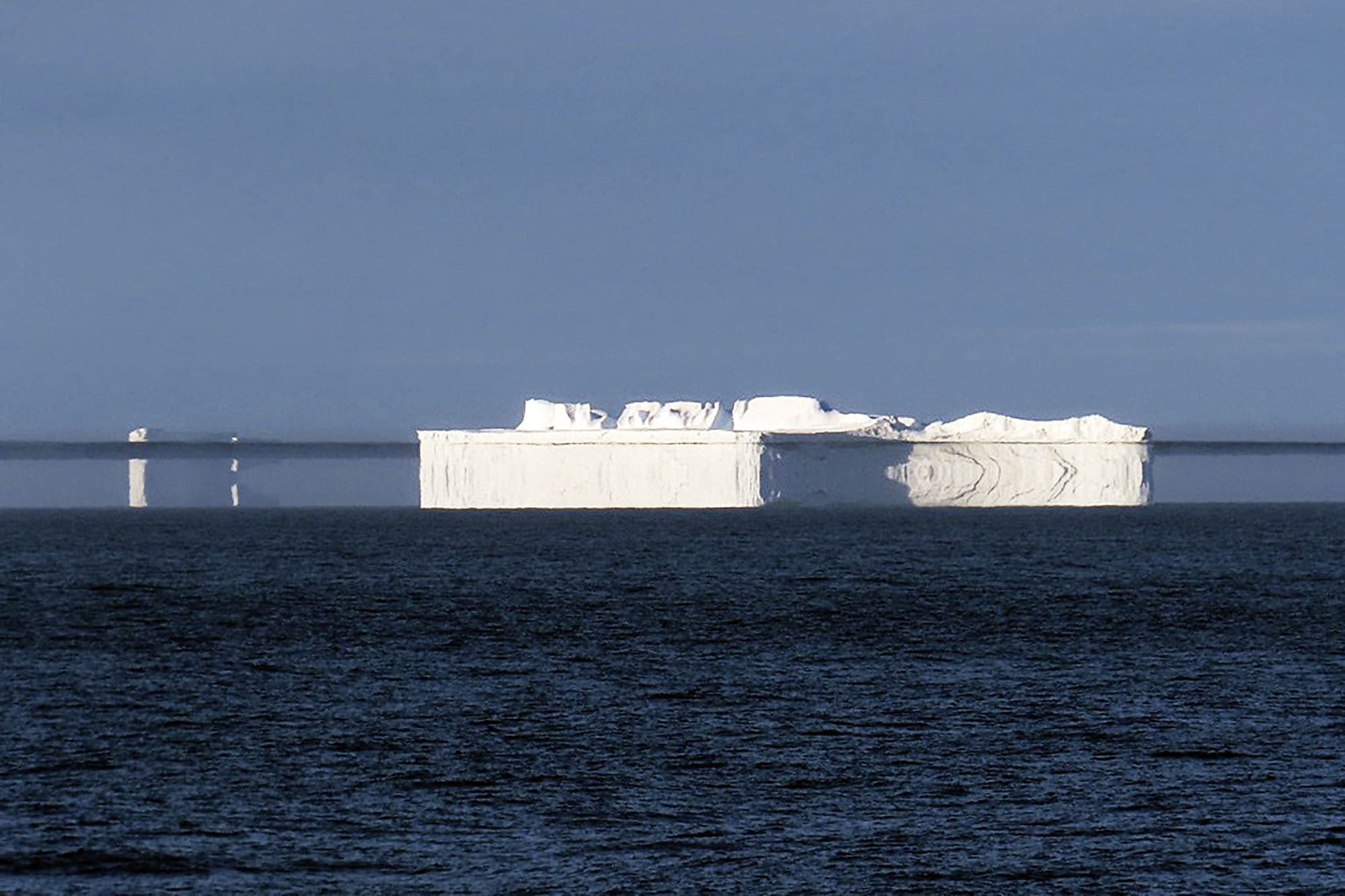
By this account, a strong thermal inversion had settled over the region—warm air suspended above colder air, refracting light down toward the surface of the sea. The theory holds that the mirage created a false horizon that obscured and distorted the iceberg, making it hard to apprehend despite the fact that it was otherwise a clear night.
More than a century on, it's difficult to imagine that such a colossal event might hinge on optical interference. But this is the quiet tyranny of perception. In every telling, the Titanic is a parable of hubris: the unsinkable ship sunk by nature. But perhaps nature didn't intervene violently. It merely toyed with vision, allowing the ship to meet its fate by seeing too late. Not mis-judgment so much as mis-seeing.
This was not the only potential perceptual failure, either. The SS Californian, stopped in the ice field just a few miles away, failed to come to Titanic’s aid. Its wireless operator had gone to bed. And its captain, seeing flares on the horizon, decided they were not distress signals. Some now speculate that the mechanics of the mirage were in play, displacing Titanic's position and masking the height and urgency of her signals. Rescue might have been possible. But again, reality was bent just enough to fail us.
By the time the sun rose, the sea was flat, the horizon clear, and the air warm for April. The Carpathia arrived to recover the living and count the dead. Nothing of the distortion remained. No one could point to the air and say it had lied. But it might have. A night-time hallucination brokered by air and sea lacking the permanence required for provability, but enough to form a plausible theory.
If the sea once gave rise to ghost ships and phantom coastlines, the sky inherited its illusions. In the decades following the Second World War, the heavens became a canvas for suspicion. Lights moved strangely. Discs shimmered and hovered. Reports filed in from lonely highways, radar rooms, missile silos. For a time, it was difficult to say what was more pervasive—the sightings, or the efforts to explain them away.
Project Blue Book. Weather balloons. Atmospheric flare. Venus.
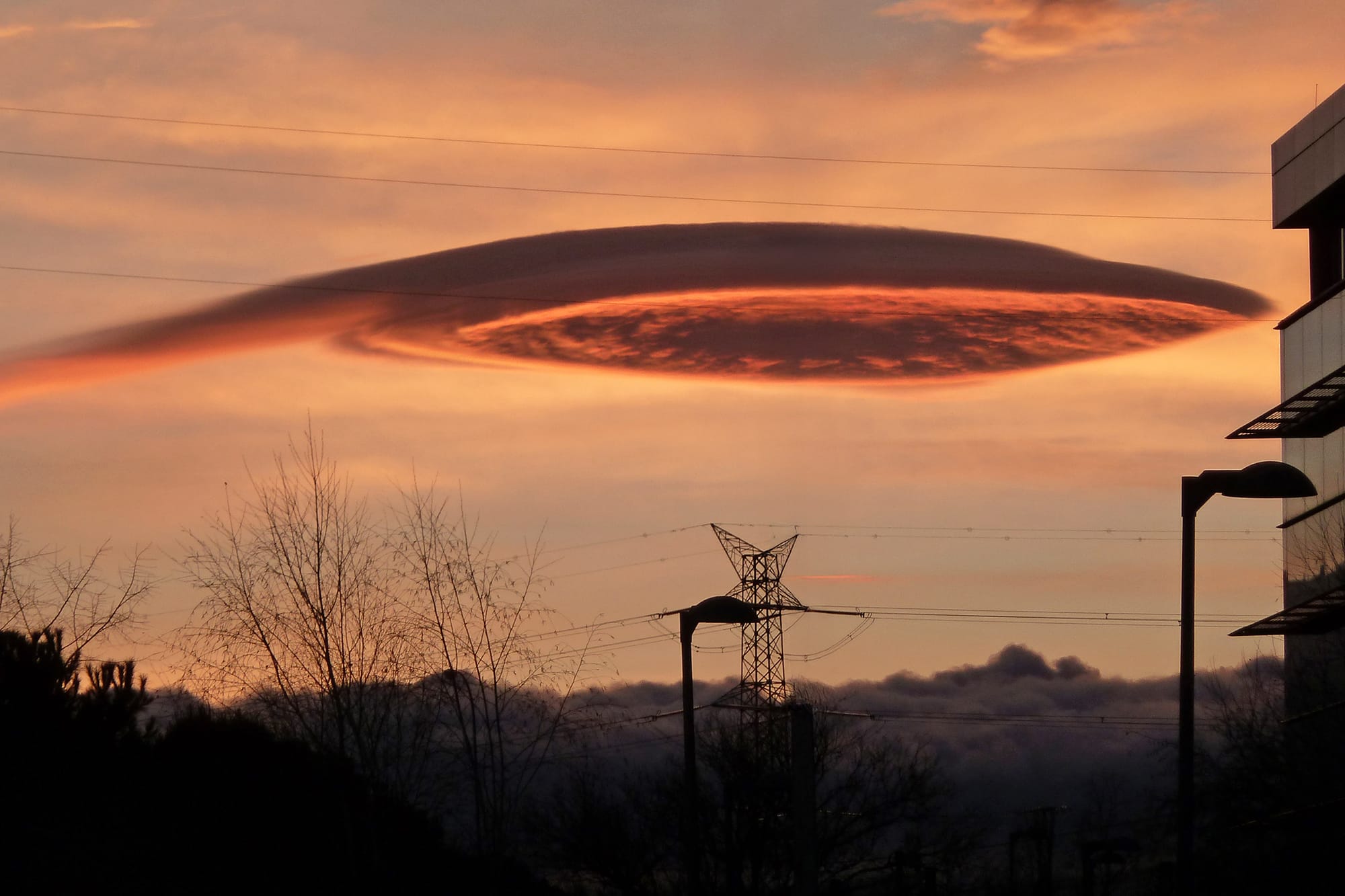
These were not always lies. Most sightings—then and now—are misperceptions. A planet refracted. A meteor seen at the wrong angle. A flock of birds banking in sunlight. The air above us bends and scatters light in ways we barely comprehend, and so we fill in what we think we see. The result is rarely spacecraft, but an error that feels profound.
Even today, in an era of high-resolution optics and sanctioned disclosures, the footage we return to most remains grainy. Infrared. Shaky. Taken from fighter jets or dash cams, confirmed only in its uncertainty. The explanations are often mundane, but the experience is not. The mirage, here, is psychological, etched into popular memory not by its content, but by the force of its ambiguity.
The X-Files had it half-right: the truth is out there, but so is everything else, be it weather, wishful thinking, or stray pixels. Still, we search the sky, as if trying to confirm a suspicion older than the satellites. We want to believe what we see but can we really trust our eyes?
Increasingly, we live amid algorithmic mirages. Deepfakes blur truth with increasing precision: synthetic voices mimic the dead, faces shift with eerie believability, entire scenes unfold with no referent in the world. These, too, are mirages, generated not by atmospheric conditions but by data patterns, machine learning, the refraction of truth through intention and tool.
Spall, in the original geological sense, was about pressure, something cracking, coming loose, revealing the fault. The modern mirage works similarly. It’s the visual residue of too much information, too much speed, and not enough grip. We are flooded with images, yet anchored by fewer shared certainties. What we see no longer settles—it's provisional, refracted, open to endless reinterpretation if we care to. More often, though, we don’t.
What unites all of these phenomena, from lakeshore illusions to Titanic distortions, from UFO misreadings to deepfaked confessions, is not merely deception, but delay. We're slow to register, slow to respond. We don’t need to be fully fooled. We only need to hesitate.
In that pause, the fracture grows. But so too does the wonder. The world doubles, shifts, casts shadows where none should fall. And for a moment—just long enough to notice—we glimpse the fault lines beneath the surface, and the strange light that leaks through. It's not our eyes that's deceived us. It's our faith that we apprehend the real. Later, we'll flinch, we'll fix, we'll explain. But the moment has already altered us.
The mirage doesn't vanish—it’s folded into memory.